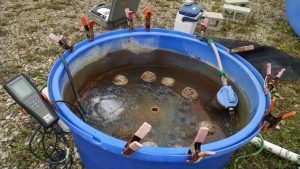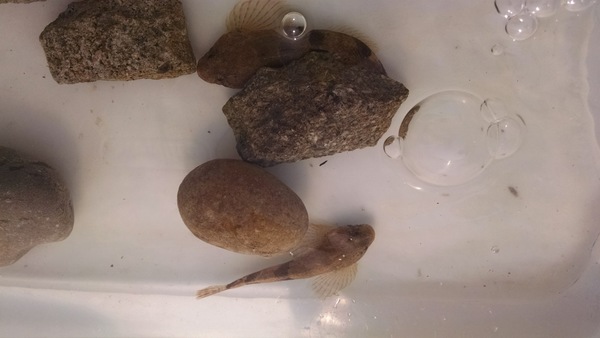
As far as water contaminants go, microbeads are the media darling. And while the pending ban on microbeads in personal care products is a big step forward for water quality and environmental protection there’s a bigger threat when it comes to tiny plastic particles in our water: microplastics.
A recent study by the U.S. Geological Survey found that microbeads are actually the least common form of microplastic pollution in Great Lakes tributaries. Microplastics: tiny plastic fibers from items such as synthetic clothes, diapers, and cigarette butts are most common at 71% of all collected.
Microplastics are showing up in fish, birds, and even whales. Few animals, if any, are capable of digesting them, which leads to a build up in the digestive tract. One study found that young fish preferred the plastic to their natural food source, effectively starving them before they reached reproductive age.
A team from the Stream and Wetland Ecology Lab at the University of Notre Dame, led by Dr. Gary Lamberti, is conducting a pilot study to learn more about how these tiny plastic particles wind up in the fish we catch and eat.
“We hypothesize that invasive dreissenid (zebra and quagga) mussels, as filter-feeders, may accumulate microplastics and that these mussels can transfer microplastics to the round gobies that eat them (and subsequently, the fish that eat round gobies such as smallmouth bass),” explains Katherine O’Reilly, a graduate student researcher.

Experimental set-up: ND Linked Experimental Ecosystem Facility (LEEF) involves 8 Sculpin in individual tanks. By having these small tanks within the larger blue tank, we can keep each fish at the same environmental conditions, while being able to control the amount of food they eat.
Fish, birds, and other animals that ingest microplastics can experience digestive and reproductive problems, as well as death.
Pollutants such as pesticides, persistent organic pollutants like PCBs, and bacterial pathogens can accumulate at unsafe levels on the tiny particles posing not only a threat to fish and other wildlife, but also to humans.

Mottled Sculpin, a native benthic fish found in many fast-flowing streams and rivers around the Great Lakes region.
At the University of Notre Dame Linked Experimental Ecosystem Facility (LEEF), the team feeds bivalves (clams, mussels, etc.) injected with fluorescent microplastics to a native bottom-dwelling fish called the Mottled Sculpin.
At the end of the study, the fishes will be examined at a biological imaging lab to collect data on how much of the microplastic sample remained in the fish’s digestive track.
The research will help us better understand how microplastics move up the food web. And more importantly it will help water managers and policy-makers better protect the Great Lakes environment and economy as well as public health.
Originally published by Adrian de Novato at www.greatlakesnow.org on September 27, 2016